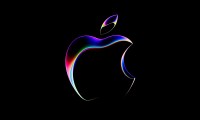When Apple revealed OS X Yosemite today during the WWDC 14 opening keynote, it demoed a feature built into the OS that looks a lot like something which debuted with Windows 8 back in October 2012.
However, the key difference between this feature in OS X Yosemite, and its Windows 8 counterpart, is this: Apple took a good idea and actually made it work. Cook and his team stripped out the parts that don’t work in Windows, but kept the good stuff. Search for OS X Yosemite looks a lot better than it does in Windows 8.
The new version of Spotlight lets you to search through both your computer and the Internet for whatever your heart desires. It automatically generates search results, and provides preview versions of those results as well. It can even perform app-specific searches. For example, if you search for a particular app on your OS X computer using Spotlight, not only will it pull up that app, but it will also display the documents you most recently created and worked with when using that particular app. This makes document retrieval easier and also significantly diminishes the need to put shortcuts on your desktop. This paves the way for a much cleaner, and organized OS X user experience.
Apple has done what it’s best at: it took an existing concept and made it a lot better than it was before.
When you’re interacting with the Metro UI in Windows 8, if you simply start typing anything, the operating system’s Search Charm will automatically sift through your computer, and try to match whatever you typed in with stuff that’s on your PC. The search results will also include Web search suggestions, along with apps that match the terms you entered with items from the Windows app store.
Sounds cool, right? It also sounds a lot like the new version of Spotlight in OS X Yosemite, doesn’t it? Personally, we’ve gotten used to the Windows Modern UI (somewhat, anyway), and have learned to like and use the Search Charm in Windows 8 fairly often. However, its been saddled with a few major problems that have prevented it from gaining a huge fan base, starting with where it’s located in the OS.
First of all, the fact that this Search feature is built into the tiled/Metro UI in Windows 8, as opposed to being enabled throughout Windows, doesn’t help its, or Microsoft’s cause. Ever since Windows 8 first hit the market, the OS has been polarizing, at best. Adoption has inched upward, but still remains at levels that are way below Windows XP and Windows 7 numbers. Because the dual-UI nature of Windows 8 made it so difficult for many people to wrap their heads around how to use it, Windows 8 sales have suffered, and solid features, like the Search Charm, never got the attention or praise they deserved.
Apple one-ups Microsoft in this respect by taking the bare-bones aspects of their Search Charm, and built it into the basic OS X Yosemite desktop experience. As demoed by Apple during the WWDC keynote, instead of forcing users to navigate to a completely different interface that’s far removed from anything that anyone has ever seen in OS X, as was the case when Windows 8 landed, Apple baked this into OS X Yosemite by allowing users to use the new version of Spotlight simply by typing when they’re on the desktop. When you begin to type, Spotlight in OS X Yosemite will pop up immediately as a search bar, and generate search results in real time.

Though the Windows 8 Search Charm is very similar, Microsoft essentially buried the feature by only putting it on half of the OS. Why? Microsoft tried forcing users to interact with aspects of the Metro UI to use the Search Charm, refusing to enable the feature on the classic Desktop UI as well. By simply placing the search bar (which is mainly what the Search Charm consists of anyway, as is the case in the new version of Spotlight) in the middle of the desktop UI and integrating it into that classic and familiar experience, it could’ve significantly streamlined Windows 8, thereby increasing its usability, and perhaps gained a few more fans. For whatever reason, that never came to fruition.
In short, Apple has done what it’s best at: it took an existing concept and made it a lot better than it was before.
This is a pattern that’s a big part of Apple’s history ever since the company sky-rocketed to brand new heights in the 2000s. Think about the development of the iPhone, iPad, and MacBook. Cell phones, tablets, and laptops existed for years before Apple debuted any of those devices. Apple’s approach is what made the difference. It took those device categories, and polished them. Then, polished them some more, and some more. Apple refined those product categories until they turned into top-tier products.
That seems to be exactly what has happened in the case of the new version of Spotlight in OS X Yosemite. Once again, Apple took a good idea that was conjured up by someone else, and refined it, resulting in a significantly improved variation on an existing theme. This leaves us wondering whether the story of Windows 8 would’ve been different had Microsoft integrated the Search Charm more seamlessly with the tried and true desktop, instead of pushing people towards the widely disliked Modern UI.



